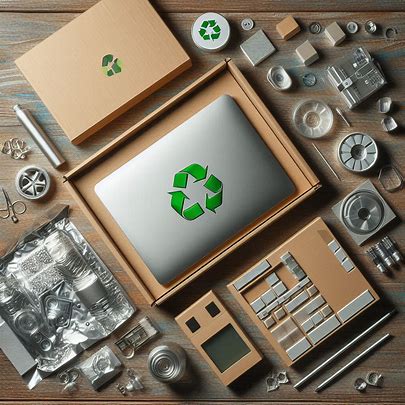Eco-Friendly Coding: The Most Energy-Efficient Programming Laptops in 2025

Tech manufacturing now accounts for nearly 4% of global carbon emissions, and the demand for high-performance laptops has only intensified. Developers who spend long hours coding on power-hungry machines are starting to look for greener alternatives—devices that combine power, portability, and energy efficiency. As 2025 progresses, sustainable tech for programmers has become more than just a trend. It’s a necessity.
Programmers seeking efficient machines no longer have to compromise on speed or capability. Some of the top coding laptops for developers featured on Cable Nerds website also rank among the most eco-conscious options on the market. Brands like Apple, Dell, and LG are integrating recycled materials, adopting clean energy in their production processes, and designing laptops that use less power while lasting longer.
Why Energy Efficiency Matters for Developers
Running powerful IDEs, local servers, virtual machines, and AI tools requires serious processing power. But power doesn’t have to mean waste. Choosing a low-power developer laptop not only helps reduce electricity bills but also shrinks your carbon footprint, especially if you’re coding for 8–10 hours a day.
Energy-efficient laptops generate less heat, resulting in lower cooling demands and extended battery life. For remote workers or digital nomads, that’s a game-changer. Plus, efficient machines age better. Drawing less energy means fewer overheating issues and slower battery degradation.
Top Eco-Friendly Laptops for Programmers in 2025
Apple MacBook Pro (M4)
The 2025 MacBook Pro with the M4 chip is Apple’s most efficient machine yet. Not only does it outperform many high-end Intel and AMD machines in raw computing power, but it does so using significantly less energy. Thanks to the ARM-based M4 chip, thermal output is lower, and battery life extends well past 20 hours, depending on the workload.
Apple’s manufacturing has also moved toward carbon-neutral goals. The chassis is made from 100% recycled aluminum. And the company now powers over 80% of its production with renewable energy. It’s no surprise that the MacBook Pro ranks high for those seeking energy-efficient MacBook options.
LG Gram 17
Weighing just under 3 pounds, the LG Gram 17 offers incredible performance in an ultra-light package. But what sets it apart is its power consumption. It utilizes a low-voltage Intel Core Ultra 7 chip and an efficient IPS display, which together enable it to last over 18 hours on a full charge.
The Gram 17 also supports LG’s ongoing sustainability efforts, which include eco-friendly packaging and partnerships with responsible recycling firms. The company aims to reuse more materials in future generations, making the Gram series an excellent choice for environmentally conscious computing.
Dell XPS 13 Plus (2025)
Dell continues to impress with its XPS line. The 2025 XPS 13 Plus features a sleek design, an OLED screen, and 13th-generation Intel chips. What’s special is Dell’s commitment to sustainability. This laptop is built using low-emission aluminum and 100% recycled or renewable packaging materials.
Dell has also pledged to reuse or recycle an equivalent product for every one sold. This aligns nicely with the concept of sustainable technology for programmers seeking high-quality hardware with minimal environmental impact.
More Than Just Battery Life
It’s easy to focus only on battery life or wattage, but true sustainability involves multiple factors. Look at the full life cycle: how the product is manufactured, what it’s made of, how long it lasts, and how easily it can be repaired or recycled. For instance, community-scale renewable setups like tidal energy projects highlight how clean tech can be built responsibly from the ground up. Energy-efficient hardware is just one piece of the puzzle.
Software also plays a role. Developers using optimized IDEs and browsers, turning off background apps, or working in power-saving modes can further reduce their energy impact. Even using a dark mode can help on OLED screens.
What to Look for in an Eco-Friendly Laptop
When shopping for eco-friendly laptops, developers should pay attention to:
- Processor Efficiency: Look for ARM-based chips or low-voltage Intel/AMD variants.
- Battery Life: Anything above 15 hours is considered excellent.
- Build Materials: Recycled metals, plastics, or bio-based components.
- Manufacturer Policies: Companies that have take-back programs or carbon-neutral targets.
Devices like the MacBook Air M4, Asus Zenbook S13 OLED, and Framework Laptop 16 also deserve a mention. While they may not lead in performance, they offer strong efficiency and customization options.
The Developer’s Role in Greener Tech
As developers, we’re already shaping the future through code. Making smarter hardware choices is a simple but powerful way to extend that influence. Choosing a laptop with a lower carbon footprint, supporting companies with ethical sourcing, and recycling old machines when upgrading—these choices collectively make a significant impact.
In 2025, energy efficiency is no longer a compromise; it is a necessity. It’s an innovative and sustainable way forward for coders who care about both performance and the planet.
Conclusion
Eco-friendly laptops are no longer niche options—they’re mainstream. Whether you’re building enterprise software or launching your next SaaS startup, the tools you choose reveal a great deal about your values. From Apple’s M4-powered MacBook to LG’s ultra-light Gram series, you now have options that align performance with sustainability. And that’s a win for both productivity and the environment.

